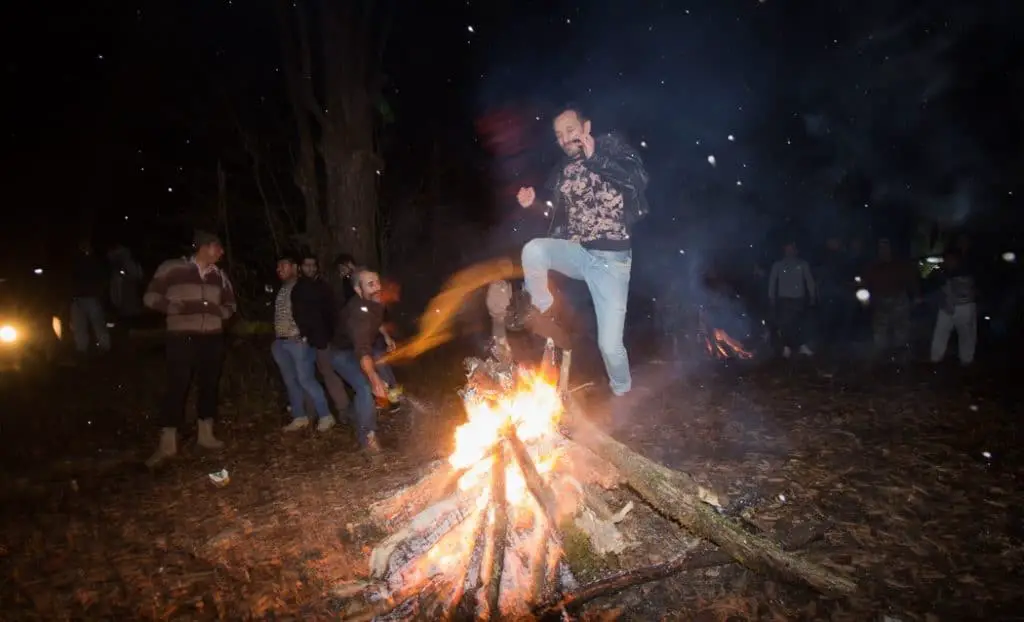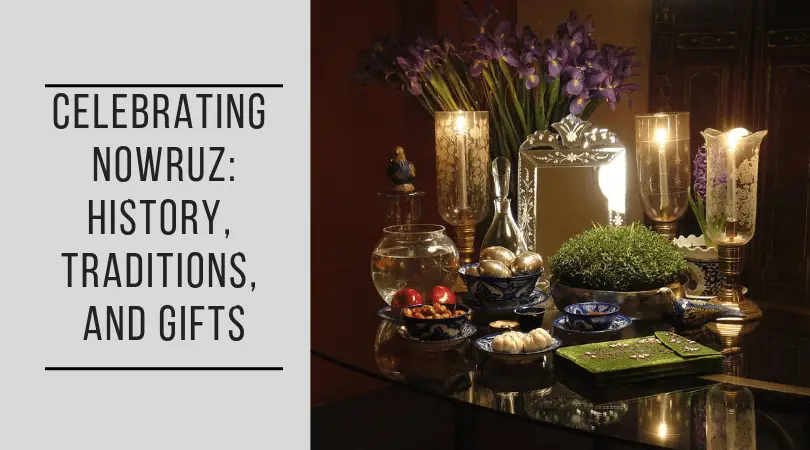The History of Nowruz
Nowruz is a Persian holiday that marks the end of the old year and beginning of spring while also symbolizing renewal and rebirth. This year, Iranians will mark the year 1399!
In 2020, Novruz is happening on March 20th. It is usually set between 19th and 21st of March and aligns with the astronomical beginning of spring. Although there’s no information on when exactly it began to be celebrated, it is estimated that the holiday began around 3,000 years ago since it’s roots are in the ancient religion of Zoroastrianism.
The holiday is especially celebrated in Iran, however, it can also be seen in other areas of Asia, especially Central and South, as well as in the Balkans and East Africa. It is believed that the holiday was spread to Turkey, South Asia, and the Balkans by the Ottomans and other medieval empires that came from the Persian area.
Nowruz was much more popular in the old age before Christianity began influencing global holidays and beliefs.
Although the celebration itself has changed a lot over the years, it is still one of the favorite and most important holidays in Persian culture. The traditions vary in different countries. However, the fundamental beliefs remained the same.
Contrary to the secular New Year that happens on the 1st of January, Nowruz is a religious holiday for most people who celebrate it, especially for Muslims. However, there are some people who celebrate the Persian New Year solely for traditional reasons.
Traditions
Like with all holidays, the most significant customs around Nowruz are spending time with family and preparing traditional dishes. Bonfires are also commonly set, as a symbol for renewal, life, and health.
Nowruz in Iran
In Iran, the celebrations spread over two weeks. They begin with Khaneh Tekani, when everyone cleans their homes thoroughly and buys new clothes. These acts help to renew both their houses and themselves. This is also when they begin preparing some traditional dishes, such as Samanoo (wheat pudding).
The holiday is spent with family, while there are also many performers on the street dressed as Hajji Firuz, a traditional Nowruz character.
On Chahar Shanbeh Suri, small bonfires are made in the streets, and the people jump over them and chant for good health in the new year. On this day, people also visit the houses in the neighborhood and exchange gifts. Many holiday gifts can be found at the markets, including the seven items that Iranians should traditionally have in their homes on New Year.

Haft Seen
Each of these items represents an element, which corresponds with seven holy immortals who protect them. They all begin with a letter “S.” They include:
- An apple for beauty and health (Seeb)
- Grass for rebirth (Sabzeh)
- Dried fruit for love (Senjed)
- Garlic for protection (Seer)
- Vinegar for wisdom (Serke)
- Wheat pudding for fertility and wealth (Samanoo)
- The Sumac plant for the sunrise of a new year.
Sometimes they will also add a few goldfish to a bowl and candles spread on mirrors.
Nowruz in Kurdistan
Kurds link this holiday with the story of Kawa that can be found in an epic poem known as the Shahnameh.
This character was a blacksmith and a leader of a revolution against Zahak, a totalitarian Assyrian King. As a celebration of his victory, he established the holiday. Like Iranians, Kurds also jump over bonfires and circle them, performing traditional dances. Since Kurds couldn’t always practice their religion freely, their Nowruz celebrations also symbolize the battle against oppression.
They spend time with their families, popularly in the countryside where there have picnics.
Nowruz in the United States
Millions in America also celebrate Nowruz. The festivities are organized on college campuses and parks, while there are also many Persian art exhibitions and concerts. Although the celebrations are primarily organized for Persians in the US, others also attend as a way to learn more about Persian culture as well as to enjoy their traditional foods and art.
One of the biggest celebrations in the US last year was in Los Angeles at UCLA on March 10. It was a daylong festival with a huge Haft-Sin display, a Spring Walk parade, traditional performances as well as many children activities. In 2020, festivities are overall overshadoed by the Coronavirus. But nevertheless, Persians from around the world are getting together to celebrate their favorite holiday.
Foods and Gifts
There are several dishes and sweets that are made specifically on Nowruz. One of them is Sabzi Polow ba Mahi, which consists of rice, whitefish, and various herbs which give this simple dish a delicious flavor.
Those who prefer meat will prepare Reshteh polo, a dish with rice and toasted noodles, served with a meat mixture. Kookoo Sabzi is also common, and it is based on an omelet with a variety of herbs such as parsley, tarragon, and fenugreek which give it a deep green color.
Desserts are also an important part of the Nowruz celebrations, especially because of the old legend which proposes that King Jamshid discovered sugar on this very day. Dining tables are packed with baklava, a sweet pastry filled with nuts and honey or syrup, as well as rice, chickpea, walnut, and almond cookies.
See some more of these tasty treats by reading our post on Persian Sweets!
While gifting is not a huge part of Nowruz, people may give presents to each other, mainly adults to children. Customarily, the most common Nowruz gifts are money, gold coins, sweets, and flowers. If you’re going on a Nowruz party, all of these gifts would be appropriate, as well as other simple things such as candles (since they celebrate with fire) and pendants, paintings, or decorative items with Persian symbols and poetry.
Click the links to see more about Persian Gifts for Men and Persian Gifts for Women.
For its symbolism and noteworthy traditions, many consider Nowruz to be much better than traditional new year celebrations in the West. In any case, it is a beautiful holiday and everyone would benefit from joining the festivities. You can learn about ancient Persian culture and greet spring with your family and friends





2 thoughts on “Nowruz, Persian New Year: History, Traditions, and Gifts”